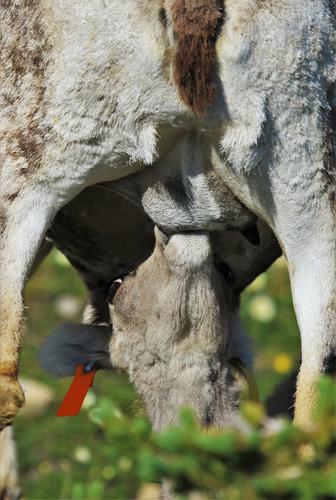当前位置:
X-MOL 学术
›
J. Appl. Ecol.
›
论文详情
Our official English website, www.x-mol.net, welcomes your
feedback! (Note: you will need to create a separate account there.)
Growth and reproduction trade‐offs can estimate previous reproductive history in alpine ungulates
Journal of Applied Ecology ( IF 5.0 ) Pub Date : 2021-01-21 , DOI: 10.1111/1365-2664.13840 Benjamin Larue 1 , Fanie Pelletier 1 , Steeve D. Côté 2 , Sandra Hamel 2 , Marco Festa‐Bianchet 1
中文翻译:

生长和繁殖的权衡可以估计高山有蹄类动物以前的繁殖史
更新日期:2021-01-21
Journal of Applied Ecology ( IF 5.0 ) Pub Date : 2021-01-21 , DOI: 10.1111/1365-2664.13840 Benjamin Larue 1 , Fanie Pelletier 1 , Steeve D. Côté 2 , Sandra Hamel 2 , Marco Festa‐Bianchet 1
Affiliation

|
- Life‐history theory predicts energy allocation trade‐offs between traits when resources are limited. If females reduce allocation to growth when they reproduce, annual growth could reveal past reproductive effort, which would be useful to assess population dynamics and harvest sustainability. The potential and accuracy of growth measures for predicting reproductive success have rarely been evaluated with individuals with known reproductive history.
- We used long‐term monitoring of annual growth and reproduction of marked female bighorn sheep and mountain goats, two species in which primiparity normally occurs well before growth completion, to evaluate growth versus reproduction trade‐offs and their potential for predicting reproductive history of young females using mixed models and 10‐fold block cross‐validation.
- We documented a significant reduction in mass gain and horn growth in young reproducing females of both species. This trade‐off was affected by individual differences in energy acquisition and allocation because population density and previous allocation to growth affected the trade‐off. We then parameterized models to predict individual reproductive history of young females based on the growth traits subjected to a reproductive trade‐off.
- The accuracy of predictive models ranged from 85.2% to 91.0% across species and traits, indicating that growth is a good predictor of reproductive history. This method is especially useful for population management of species with traits that form permanent visible yearly annuli because they retain a record of annual growth that allows retrospective estimation of reproductive history over multiple years.
- Synthesis and applications. We show that because growth significantly decreased in years of allocation to reproduction, annual growth increments provide insights on reproductive history of young females. Population or temporal differences in reproduction of young females affect demographic rates and sustainable harvest. Growth measures of traits that form yearly annuli, such as teeth and horns, could be easily obtained at a low cost from animals harvested or found dead in multiple species. Thus, predictive models of reproductive history based on annual growth could assist conservation and management in a broad range of species.
中文翻译:

生长和繁殖的权衡可以估计高山有蹄类动物以前的繁殖史
- 生命历史理论预测资源有限时性状之间的能量分配折衷。如果雌性在繁殖时减少对增长的分配,那么年增长率可以表明过去的生殖努力,这将有助于评估人口动态和收获可持续性。很少有已知生殖史的人评估增长措施预测生殖成功的潜力和准确性。
- 我们对标记的雌性大角野绵羊和高山山羊的年生长和繁殖进行了长期监测,这两个物种通常在生长完成之前就很容易出现初生,以评估生长与繁殖之间的权衡,以及它们预测年轻雌性繁殖史的潜力。使用混合模型和10倍块交叉验证。
- 我们记录了两个物种的年轻繁殖雌性的质量增加和角生长显着减少。这种权衡受到能源获取和分配的个体差异的影响,因为人口密度和先前对增长的分配影响了权衡。然后,我们根据经历生殖权衡的生长特征对模型进行参数化,以预测年轻女性的个体生殖史。
- 物种和性状的预测模型的准确性在85.2%至91.0%之间,表明生长是生殖史的良好预测指标。该方法对于具有形成永久可见的年轮状的性状的物种的种群管理特别有用,因为它们保留了年度增长记录,可以回顾性评估多年的繁殖历史。
- 综合与应用。我们表明,由于在分配给生殖的年份中增长显着下降,因此每年的增长增量提供了关于年轻女性生殖史的见解。年轻女性繁殖的人口或时间差异会影响人口统计率和可持续收成。可以很容易地以低成本从收获的动物或发现死于多种物种的动物中轻松获得形成年轮状性状(例如牙齿和角)的性状的生长指标。因此,基于年增长的生殖史预测模型可以帮助保护和管理广泛的物种。











































 京公网安备 11010802027423号
京公网安备 11010802027423号